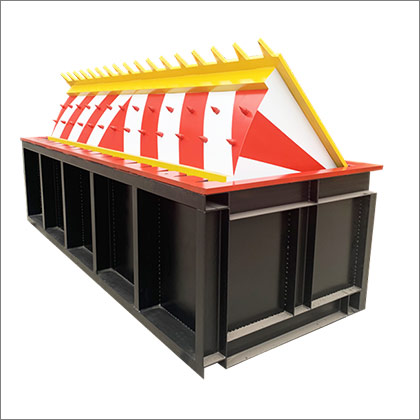Choosing the right road blocker involves considering various factors to ensure effective security, traffic control, and compatibility with site requirements. Here are several key considerations when selecting a road blocker:
Security Requirements: Determine the level of security needed for the site or facility. Road blockers come in different security ratings, ranging from basic anti-ram barriers to high-security models capable of stopping heavy vehicles or providing crash resistance against hostile threats. Consider the site’s vulnerability to unauthorized vehicle access and choose a road blocker that provides adequate protection.
Impact Resistance: Assess the potential threats and impact forces that the road blocker may encounter. For high-security applications or areas prone to vehicle attacks, select a road blocker with robust construction and crash-tested design. Look for models that meet relevant international standards for impact resistance, such as PAS 68 or ASTM F2656.
Installation Environment: Consider the site conditions and installation environment when choosing a road blocker. Evaluate factors such as ground conditions, space limitations, underground utilities, and surface finishes. Choose a road blocker that is suitable for the site’s terrain, whether it’s concrete, asphalt, gravel, or soil, and ensure proper clearance for installation.
Operational Requirements: Determine the operational requirements and functionality of the road blocker. Decide whether a fixed or retractable model is needed based on traffic flow, access control needs, and operational preferences. Retractable road blockers offer the flexibility to selectively control vehicle access, while fixed barriers provide permanent security protection.
Integration with Access Control Systems: Ensure compatibility with existing access control systems and security infrastructure. Choose a road blocker that can be seamlessly integrated with barriers, gates, bollards, and electronic access control systems, such as RFID readers, proximity sensors, or license plate recognition systems. This allows for centralized control and monitoring of vehicle entry and exit.
Maintenance and Reliability: Consider the maintenance requirements and reliability of the road blocker. Select a model with durable components, weather-resistant finishes, and minimal moving parts to minimize maintenance needs and ensure long-term reliability. Choose a reputable manufacturer or supplier that offers warranty coverage and reliable technical support.
Regulatory Compliance: Ensure compliance with relevant regulations, standards, and local authorities’ requirements for road blockers. Verify that the chosen model meets applicable safety, environmental, and accessibility standards, as well as building codes and planning regulations. Obtain necessary permits and approvals for installation to ensure legal compliance.
Cost and Budget: Evaluate the cost of the road blocker, including initial purchase price, installation expenses, and ongoing maintenance costs. Compare quotes from multiple suppliers and consider the total cost of ownership over the product’s lifespan. Balance cost considerations with the desired level of security, performance, and reliability to make an informed decision.
By carefully considering these factors and conducting a thorough assessment of security needs, site conditions, and operational requirements, you can choose the right road blocker to enhance security, control vehicle access, and protect critical infrastructure effectively.


